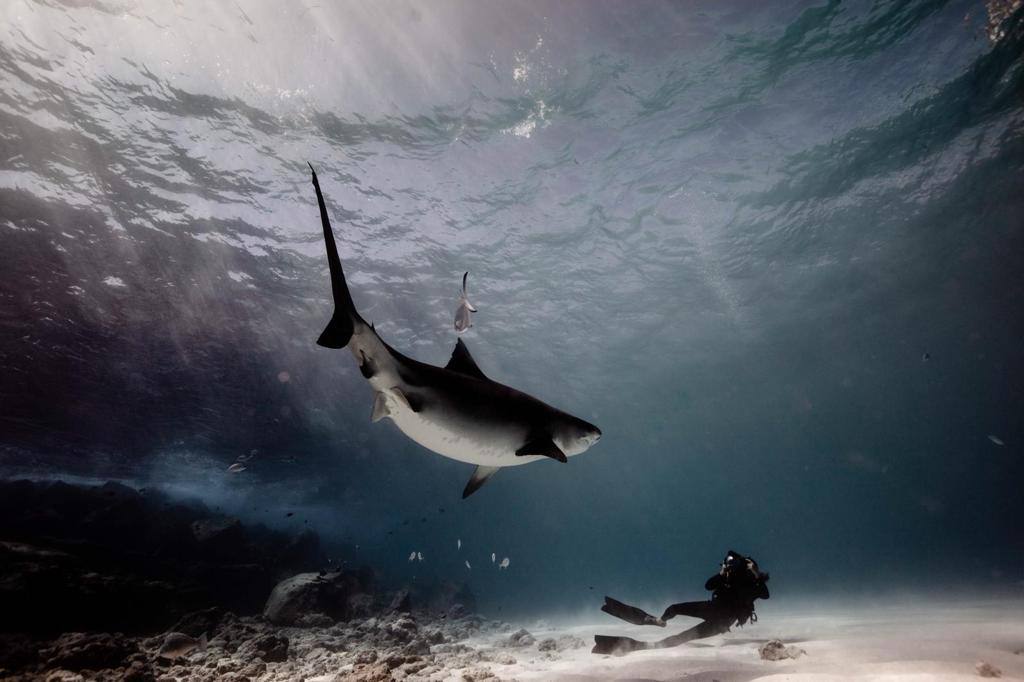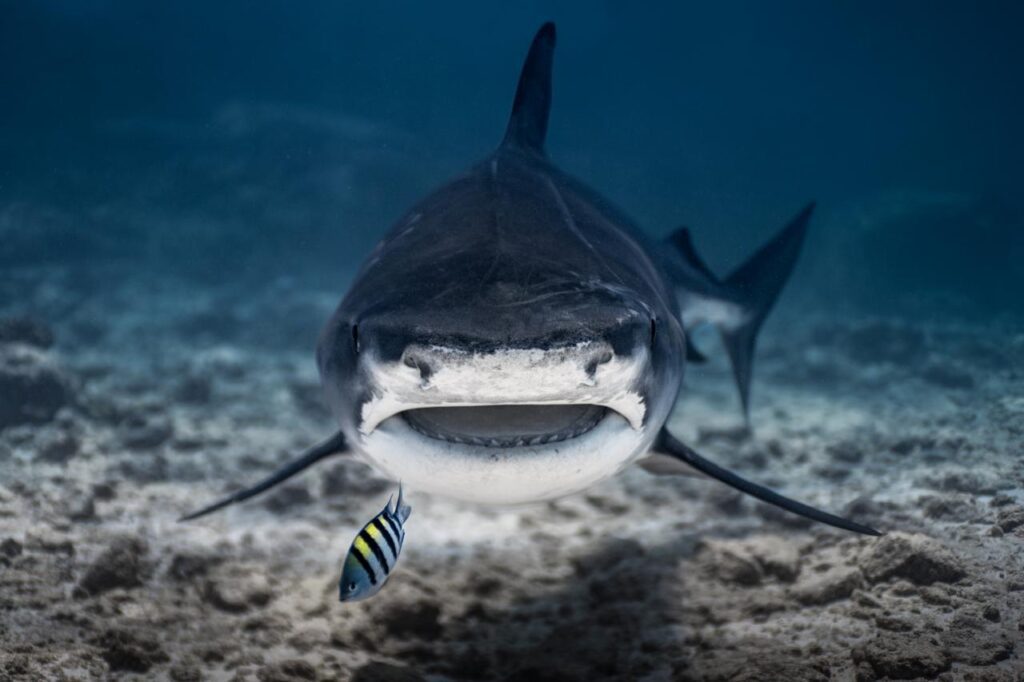
Tiger sharks are one of the most formidable predators in the ocean. The powerful jaws and sharp teeth are the fierce weapons they use to capture and crush anything that they choose to hunt and attack. When tiger sharks increase in size, their prey size and varieties of prey also increase.
Research has shown that when the length of tiger sharks increases, the presence of fish such as teleosts (fish group of ray-finned fishes) and cephalopods (members of the molluscan class such as squid, octopus, and cuttlefish) decreases in their stomachs (Owe’, Wetherbee, Crow, Tester, 1996). And with this increase in size, the presence of elasmobranchs (fish species such as sharks, skates, rays, guitarfish, and sawfish), turtles, land mammals, crustaceans, and indigestible things also increases.
In different parts of the world, scientists have studied how the size of sharks’ prey have changed as sharks have grown. Researches from Hawaii and other locations have shown that these changes or shifts are common in tiger shark species.
These findings show that these species are opportunistic feeders—they prey on things that are easy to strike and capture. Small tiger sharks normally feed on the bottom. These small species are nocturnal (mostly active at night). But the larger tiger sharks feed at the bottom during the night, although they also feed near the surface during the day.
Embedding of Instagram page permission granted by lonubreak
The feeding behavior of tiger sharks is interesting. The variety of their prey allows them to make their own choices. Tiger sharks are regarded as choosing a cosmopolitan diet, selecting a variety of prey.
Ontogenetic Dietary Shifts (OSDs) refer to the changes in a species’ diet that occur as they grow. These changes have been recorded in shark species, including soupfin, lemon, mako, and white sharks.
According to Rancurel & Intes (1982), small tiger sharks of less than 200 cm fed heavily on reef fish found in shallow lagoons in New Caledonia, a semi-autonomous French territory. And large tiger sharks consume larger prey, including turtles, birds, crabs, and squids.
A study that was conducted in the Australian waters by Professor Colin Simpfendorfer (1992) found that small tiger sharks of less than 150 cm consumed mainly sea snakes and teleosts. Larger sharks preyed on turtles, birds, and elasmobranchs. But these studies did not rule out the possibility of ontogenetic shifts in these species.
According to scientists, ontogenetic changes in prey diversity and size may be related to different sizes of sharks that occupy different habitats. And larger sharks may be more efficient hunters and capable of capturing faster prey.
It has been observed that even if the tiger shark size increases, they capture small prey, including teleosts, crustaceans, land mammals, and indigestible items. This increase in diversity shows that larger sharks are not shifting their diet to larger prey. But they are expanding their diet by eating a variety of small prey.
Researchers link these dietary changes to activity patterns. Larger tiger sharks inhabit a greater variety of habitats. Hence, they are able to select a large selection of prey. Larger tiger sharks spend more time in pelagic waters than the smaller ones. They also catch pelagic species like scombrids (medium to large, streamlined, fast-swimming schooling fishes like bonitos and tunas), coryphaenids (ray-finned fish like dolphinfish), and isiophorids (billfishes, marlins, sailfishes, or spearfishes).
Rancurel & Intes (1982) suggested that larger tiger sharks from New Caledonia fed in deeper, pelagic waters more often than small sharks. Researchers found deep-water crabs and pelagic squids in the stomachs of larger tiger sharks.
Ontogenetic changes in feeding behavior and acquired hunting skills (Wetherbee et al. 1990) may also result in increased prey diversity. Branstetter et al. (1987) stated that small tiger sharks may not be capable of rapid swimming speeds due to their thin, elongated bodies and anguilliform swimming motion.
Ontogenetic shifts in the diet of tiger sharks may provide better understanding of shark attacks on humans. One theory suggests that white sharks may mistake humans for their natural prey (McCosker 1985). Shifting the diet could be a factor for attacking humans. Klimely (1985) suggested that white sharks shift from a diet of primary teleosts to marine mammals after attaining a size greater than 240 cm in length. As a result, larger white sharks may pose an increased threat to humans due to this shift in diet, as their prey is similar in size to humans.
According to a study conducted by the Hawaii Institute of Marine Biology, University of Hawaii, Manoa, these species of prey were not found in any stomachs of tiger sharks less than 230 cm TL. Therefore, tiger sharks larger than 230 cm TL may pose the greatest threat to humans (Owe’, Wetherbee1, Crow, Tester, 1996).


